Home>Garden Essentials>Garden Storage>Garden Path Ideas: 15 Ways To Create A Beautiful Walkway
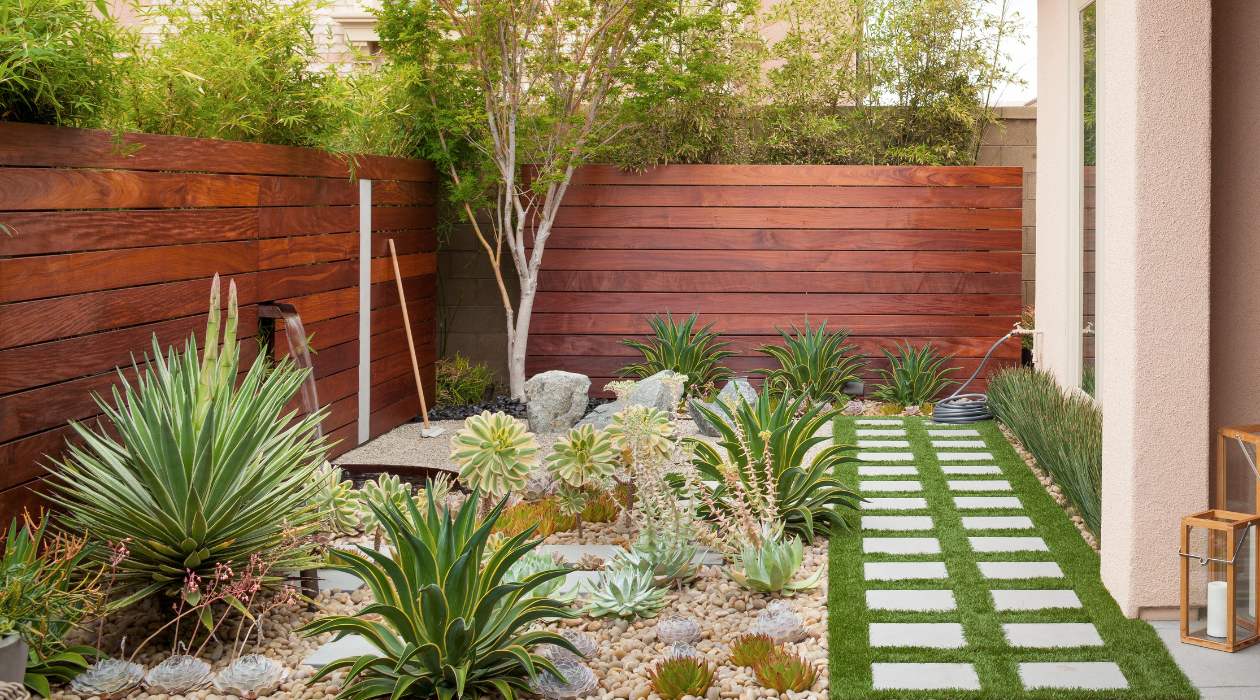

Garden Storage
Garden Path Ideas: 15 Ways To Create A Beautiful Walkway
Modified: October 31, 2024
Discover 15 stunning garden path ideas that will transform your outdoor space. From colorful tiles to stone pavers, find storage solutions and create a beautiful walkway.
(Many of the links in this article redirect to a specific reviewed product. Your purchase of these products through affiliate links helps to generate commission for Storables.com, at no extra cost. Learn more)
Introduction
Creating a beautiful walkway in your garden not only adds functionality but also enhances the overall aesthetic appeal of your outdoor space. A well-designed garden path serves as a welcoming invitation to explore your little piece of paradise, guiding visitors through flourishing flower beds and manicured lawns. With a variety of materials and design options to choose from, you can easily transform a mundane pathway into a captivating feature that complements your garden’s unique style.
In this article, we will explore 15 inspiring garden path ideas to help you create a walkway that blends seamlessly with the natural beauty of your surroundings. From rustic stone trails to modern brick walkways, these ideas will ignite your imagination and provide practical guidance for your project.
Key Takeaways:
- Transform your garden with 15 captivating walkway ideas, from natural stone elegance to whimsical stepping stone paths, each offering unique charm and functionality to elevate your outdoor space.
- Create a harmonious and visually pleasing garden with walkways that seamlessly blend with the landscape, providing durability, versatility, and artistic flair while enhancing the overall aesthetics and functionality of your outdoor space.
Natural stone walkway
A natural stone walkway brings a timeless and organic feel to your garden. The irregular shapes, textures, and colors of the stones create a visually appealing and harmonious pathway. Whether you choose flagstone, slate, or limestone, natural stones offer durability and low maintenance.
To create a natural stone walkway, start by preparing the ground by digging a trench and leveling the area. Lay a compacted base of gravel or sand to provide stability. Next, arrange the stones in a desired pattern, leaving a small gap between each stone for moss or ground cover to grow. Fill the gaps with soil or fine gravel to create a seamless look.
The beauty of a natural stone walkway lies in its ability to blend with the surrounding landscape. It works well in gardens with a rustic, cottage-like ambiance, allowing the stones to become an integral part of the organic design. You can also enhance the pathway by incorporating plants or flowers along the edges to add color and fragrance.
Not only does a natural stone walkway offer aesthetic appeal, but it also provides a sturdy and stable surface for walking. The uneven surfaces of the stones create a natural grip, making it safer, especially during wet or slippery conditions. Additionally, the durability of the stones ensures that your walkway will withstand the test of time, requiring minimal maintenance.
Whether you opt for a winding path through a lush garden or a straight walkway leading to a focal point, a natural stone walkway adds a touch of elegance and charm to any outdoor space. It effortlessly complements both traditional and contemporary garden designs, creating a visual wow factor that will impress your guests.
Stepping stone pathway
A stepping stone pathway is a versatile and creative option that adds a whimsical touch to your garden. It allows for endless design possibilities and can be customized to fit any space or theme. Whether you want a simple and minimalist path or a playful and colorful trail, stepping stones offer both functionality and visual appeal.
To create a stepping stone pathway, start by selecting your preferred material. You can choose from a variety of options such as concrete, natural stone, or even repurposed materials like old bricks or broken tiles. Consider the size and shape of the stones, ensuring they are large enough to provide a stable walking surface.
Next, determine the layout and pattern of your pathway. You can opt for a symmetrical arrangement, spaced uniformly, or create an irregular pattern for a more artistic and organic look. Place the stepping stones in the desired locations, leaving enough space for comfortable strides.
One of the advantages of a stepping stone pathway is its flexibility. It can effortlessly navigate around trees, flower beds, or other existing features in your garden, making it a practical choice for gardens with varying terrain or obstacles. You can also incorporate different elements, such as moss, gravel, or ground cover plants, in between the stones to add texture and color.
A stepping stone pathway not only serves to guide you through your garden, but it also invites exploration and discovery. It creates a sense of adventure as you step from stone to stone, enticing you to stroll through your outdoor oasis. Additionally, it adds visual interest to your landscape, becoming a focal point that adds character and charm.
Whether you have a small courtyard garden or a sprawling landscape, a stepping stone pathway offers a delightful and playful element that appeals to both young and old. It brings a touch of whimsy to your outdoor space, turning a simple walk into a magical journey.
Gravel path
A gravel path is a cost-effective and low-maintenance option that brings a rustic and charming vibe to your garden. It is versatile, easy to install, and blends well with various garden styles. Whether you have a cottage garden, a modern landscape, or a Japanese-inspired Zen garden, a gravel path adds a timeless appeal.
To create a gravel path, start by preparing the area. Clear any existing vegetation and level the ground. It’s recommended to install a border to contain the gravel and prevent it from spreading outside the designated pathway. This can be done using edging materials such as wood, brick, or metal.
Next, lay a geotextile fabric or landscape fabric as a weed barrier to prevent unwanted growth from emerging through the gravel path. This step helps to maintain the cleanliness and uniformity of the path over time.
Once the preparation is complete, spread a layer of compacted gravel evenly along the pathway, ensuring a thickness of about 2-3 inches. You can choose from various types of gravel such as crushed limestone, pea gravel, or decomposed granite, depending on the desired texture and color.
Gravel paths offer a range of benefits. They provide good drainage, ensuring that water doesn’t accumulate on the pathway, minimizing the risk of slipping or puddling. The loose texture of the gravel allows rainwater to permeate into the ground, reducing the chances of erosion. Additionally, the sound of footsteps on gravel adds a soothing and calming element to your garden.
One of the advantages of a gravel path is its versatility. It can be easily customized to fit any shape or size, curving around existing features or creating straight lines for a more structured look. You can also incorporate stepping stones or larger rocks within the gravel path for added visual interest.
Maintaining a gravel path is relatively simple. Periodically rake the gravel to smooth out any uneven areas and replenish the surface if needed. Remove any weeds or vegetation that may emerge through the gravel to maintain its neat and clean appearance.
Whether you’re looking to create a casual and relaxed atmosphere or add a rustic touch to your garden, a gravel path is a wonderful choice. It offers a timeless and natural look that complements a wide range of garden styles, making it a versatile option for any outdoor space.
Brick walkway
A brick walkway exudes elegance and sophistication, adding a classic and timeless charm to your garden. It is a durable and versatile option that complements various architectural styles, from traditional to contemporary. With its warm tones and textured surface, a brick walkway creates a welcoming path that enhances the overall aesthetic appeal of your outdoor space.
To create a brick walkway, start by planning the layout and design. Consider the shape and dimensions of the pathway, as well as any curves or angles you may want to incorporate. Mark the pathway using stakes and string to ensure accuracy and straight lines.
Next, prepare the ground by digging a trench to the desired depth, removing any grass or vegetation. It’s important to level the ground and create a solid base for the bricks. Add a layer of compacted gravel or sand to provide stability and drainage.
Now, it’s time to lay the bricks. Start from one end and work your way to the other, positioning the bricks tightly together. Use a rubber mallet and a level to ensure that each brick is level and aligned with the adjacent ones. You can choose from various patterns, such as herringbone, basket weave, or running bond, to create a unique and visually appealing pathway.
Brick walkways offer numerous benefits. They are extremely durable, withstanding heavy foot traffic and the elements year-round. Bricks also have a natural slip-resistant surface, making them safe to walk on, even when wet. Plus, their versatile nature allows for easy repairs or modifications if needed.
Another advantage of a brick walkway is its ability to effortlessly blend with the architecture and landscaping of your garden. The warm hues of the bricks complement the natural beauty of plants and flowers, while also adding a distinct charm to the overall design. You can play with different colors and sizes of bricks to create patterns or borders that add visual interest.
Maintenance of a brick walkway is relatively simple. Regularly sweep away debris and leaves to keep the surface clean. It’s also recommended to occasionally wash the bricks with a mild detergent and water to remove any stains or dirt buildup. Ensure to check for any uneven or damaged bricks and replace them as needed.
Whether you want to create a pathway to your front door or add a meandering trail through your garden, a brick walkway is a timeless choice. Its classic beauty and versatility make it a popular option for homeowners looking to enhance the overall appeal of their outdoor spaces.
Paver pathway
A paver pathway is a versatile and stylish option that adds a touch of modern elegance to your garden. Pavers, made from a variety of materials such as concrete, natural stone, or porcelain, offer a wide range of design possibilities to suit your personal taste and the style of your outdoor space. Whether you prefer a sleek, minimalist look or a more intricate and detailed pattern, a paver pathway can transform your garden into a stunning visual display.
To create a paver pathway, start by planning the layout and design. Consider the size and shape of the pathway, as well as any curves or angles you may want to incorporate. It’s helpful to mark the pathway using stakes and string to ensure accuracy and straight lines.
Next, prepare the ground by digging a trench to the desired depth, removing any grass or vegetation. It’s important to level the ground and create a solid base for the pavers. Add a layer of compacted gravel or sand to provide stability and improved drainage.
Now, it’s time to lay the pavers. Start from one end and work your way to the other, placing each paver tightly against the adjacent ones. Use a rubber mallet and a level to ensure that each paver is level and aligned with the others. You can choose from various patterns, such as running bond, herringbone, or circular designs, to create an eye-catching and unique pathway.
Paver pathways offer many advantages. They are extremely durable and can withstand heavy foot traffic while maintaining their integrity and appearance. Additionally, the wide range of colors, shapes, and textures available allows for customization and creativity in designing your pathway.
A paver pathway also provides a non-slip surface, making it safe to walk on, even when wet. This makes it a practical choice for areas prone to rain or near swimming pools. Furthermore, pavers are low-maintenance and resistant to stains, making them an excellent choice for busy homeowners.
One of the unique aspects of a paver pathway is its ability to seamlessly blend with the surrounding landscape. The variety of materials and colors available allows you to choose pavers that complement your garden’s design. You can use contrasting colors or opt for a monochromatic palette to create visual interest and define different areas in your outdoor space.
Maintenance of a paver pathway is relatively simple. Regularly sweep away debris and leaves to keep the surface clean and prevent tripping hazards. It is also recommended to periodically inspect and replace any cracked or damaged pavers to maintain a uniform appearance.
Whether you want to create a modern and sleek pathway or a more intricate and detailed design, a paver pathway offers endless possibilities. Its versatility and durability make it a popular choice among homeowners who seek to elevate the aesthetic appeal of their gardens.
Flagstone trail
A flagstone trail is a beautiful and natural option that adds a touch of rustic elegance to your garden. Flagstone, a type of sedimentary rock, is known for its flat, smooth surface and natural color variations, which create a unique and visually appealing pathway. Whether you want to create a casual walkway or a winding trail, a flagstone pathway offers a charming and timeless addition to your outdoor space.
To create a flagstone trail, start by planning the layout and design. Consider the shape and dimensions of the pathway, as well as any curves or angles you may want to incorporate. It’s recommended to mark the pathway using stakes and string to ensure accuracy and straight lines.
Next, prepare the ground by digging a trench to the desired depth, removing any grass or vegetation. Ensure the ground is level and compacted to provide a stable base for the flagstones. Add a layer of gravel or sand to further improve stability and drainage.
Now, it’s time to lay the flagstones. Start from one end and work your way to the other, placing each flagstone in the desired location. You can choose to fit them tightly together or leave small gaps between the stones for a more natural look. Additionally, you can experiment with different orientations and shapes of the flagstones to create a unique and visually interesting pattern.
Flagstone trails offer numerous benefits. The natural stone material is highly durable and can withstand years of use and exposure to the elements. The uneven surface of the flagstones provides natural grip, making it a safe option even during wet or slippery conditions. Additionally, flagstone pathways blend seamlessly with the surrounding landscape, creating a harmonious and organic feel in your garden.
Adding foliage and plants around the flagstone trail further enhances its beauty and charm. You can choose to plant ground cover or moss in between the gaps to soften the appearance and add a touch of greenery. This not only adds visual interest but also helps to create a more natural and inviting pathway.
Maintaining a flagstone trail is relatively straightforward. Regularly sweep away debris and leaves to keep the surface clean and prevent tripping hazards. You may also need to occasionally remove any weeds or unwanted vegetation that may grow between the stones to maintain the trail’s neat and organized appearance.
Whether you want to create a meandering trail through your garden or a functional pathway to a seating area, a flagstone trail offers a timeless and charming option. Its natural beauty, durability, and versatility make it a popular choice among homeowners looking to enhance the aesthetic appeal of their outdoor spaces.
Wooden walkway
A wooden walkway adds a warm and natural touch to your garden, infusing it with a sense of rustic charm. It provides a natural aesthetic that seamlessly blends with various garden styles, from a cottage garden to a contemporary landscape. A wooden walkway offers a unique combination of functionality and visual appeal, creating a pathway that is both practical and visually stunning.
To create a wooden walkway, start by planning the layout and design. Consider the shape and dimensions of the pathway, as well as any curves or angles you may want to incorporate. It’s helpful to mark the pathway using stakes and string to ensure accuracy and straight lines.
Next, prepare the ground by clearing any existing vegetation and leveling the area. Ensure the ground is firm and compacted to provide a stable base for the wooden walkway. You may need to add a layer of gravel or sand to further enhance stability and drainage.
Now, it’s time to install the wooden planks. Choose a type of wood that is suitable for outdoor use and resistant to moisture, such as cedar or redwood. Place the planks in the desired locations, leaving a small gap between each plank to allow for expansion and contraction due to weather conditions.
One of the advantages of a wooden walkway is its versatility. You can choose to use full-size planks for a more traditional and solid appearance, or opt for smaller decking tiles for a contemporary and modular look. Additionally, wooden walkways can be easily customized to fit any shape or size, allowing you to create curves or angles to suit your garden’s layout.
A wooden walkway not only provides a practical pathway for walking, but it also adds visual interest and warmth to your garden. The natural texture and color of the wood create a beautiful contrast against the greenery, adding a touch of natural elegance. Plus, the warm tones of the wood create a welcoming and inviting atmosphere for your guests.
Maintenance of a wooden walkway is relatively simple. Regularly sweep away debris and leaves to keep the surface clean and prevent slipping hazards. It’s also important to regularly inspect the wooden planks for any signs of damage or rot. Applying a protective sealant or stain to the wood can enhance its durability and longevity.
Whether you want to create a pathway through a lush garden or a bridge over a pond or stream, a wooden walkway offers a charming and inviting addition to your outdoor space. Its natural beauty and versatility make it a popular choice among homeowners seeking a blend of functionality and aesthetics in their garden pathways.
Concrete path
A concrete path is a durable and versatile option that offers a clean and modern look to your garden. It provides a solid and long-lasting surface that can withstand heavy foot traffic and various weather conditions. A concrete path is not only functional but also offers endless design possibilities, allowing you to create a sleek and contemporary pathway that enhances the overall aesthetics of your outdoor space.
To create a concrete path, start by planning the layout and design. Consider the shape and dimensions of the pathway, as well as any curves or angles you may want to incorporate. It’s helpful to mark the pathway using stakes and string to ensure accuracy and straight lines.
Next, prepare the ground by clearing any existing vegetation and leveling the area. Excavate the soil to the desired depth, allowing enough space for the concrete thickness and any necessary reinforcements. It’s important to compact the ground and add a layer of gravel or sand for improved stability and drainage.
Now, it’s time to pour the concrete. Mix the concrete according to the manufacturer’s instructions, ensuring a smooth and workable consistency. Pour the concrete into the prepared area, using a screed board and a level to evenly distribute the concrete and achieve a level surface.
One of the advantages of a concrete path is its versatility in terms of design options. You can choose to leave the concrete plain for a minimalist look, or add texture and patterns using stamping techniques. Additionally, you can incorporate color pigments into the concrete mixture or add decorative elements like aggregates or embedded stones to create visual interest.
A concrete path offers numerous benefits. It is highly durable and can withstand heavy use and exposure to the elements. It requires minimal maintenance, making it an ideal choice for busy homeowners. Additionally, concrete is a cost-effective option compared to other materials, making it a practical choice for large or long pathways.
Maintenance of a concrete path is relatively simple. Regularly sweep away debris and leaves to keep the surface clean and prevent slipping hazards. Periodically inspect the concrete for any signs of cracks or damage, and repair as needed. Applying a protective sealant or coating can help to enhance the durability and longevity of the concrete.
Whether you want to create a straight path from your driveway to your front door or a meandering walkway through your garden, a concrete path offers a versatile and functional solution. Its clean lines and modern look bring a contemporary touch to your outdoor space, enhancing its overall aesthetics.
Consider using natural materials like gravel, stone, or wood to create a beautiful and organic walkway in your garden. These materials can add texture and visual interest to your outdoor space.
Mosaic walkway
A mosaic walkway is a stunning and artistic option that adds a vibrant and personalized touch to your garden. It allows you to unleash your creativity and transform a mundane pathway into a work of art. By using colorful tiles, glass, or other materials, you can create intricate patterns or beautiful images that will captivate the eyes of anyone who walks along the pathway.
To create a mosaic walkway, start by planning the layout and design. Consider the shape and dimensions of the pathway, as well as the overall theme or pattern you want to achieve. It’s helpful to draw a template or sketch to guide you during the installation process.
Next, prepare the ground by clearing any existing vegetation and leveling the area. If the pathway already exists, you may need to use a chisel or scraper to remove any loose or uneven surfaces. Ensure that the ground is smooth and firm before proceeding to the next step.
Now, it’s time to lay the mosaic tiles or other decorative elements. Apply a layer of adhesive or mortar to a small section of the pathway and press the tiles into place, following your design template. You can use a tile cutter or nippers to shape the tiles if needed. Continue this process until the entire pathway is covered with the mosaic design.
One of the advantages of a mosaic walkway is its ability to showcase your unique style and personality. You can choose from an array of colors, shapes, and materials to create a pattern or image that speaks to you. Whether you prefer a bold and vibrant mosaic or a more subtle and intricate design, the possibilities are virtually endless.
A mosaic walkway not only adds beauty and visual interest to your garden, but it also serves as a conversation piece and a unique focal point. Each step along the pathway becomes a piece of art to admire and appreciate. Additionally, the mosaic tiles or materials used are typically weather-resistant, ensuring that the pathway can withstand the elements and maintain its beauty over time.
Maintenance of a mosaic walkway is relatively simple. Regularly sweep away debris and leaves to keep the surface clean. If needed, use a mild cleanser and water to remove any stains or dirt buildup from the mosaic tiles. Applying a protective sealant can help to preserve the colors and integrity of the mosaic design.
Whether you want to create a mesmerizing pathway through your garden or add a decorative touch to a patio or courtyard, a mosaic walkway offers a unique and artistic solution. It allows you to bring your creative vision to life and transform an ordinary pathway into a captivating work of art.
Shell and pebble trail
A shell and pebble trail is a charming and coastal-inspired option that brings a touch of the beach to your garden. It offers a natural and textured pathway that adds a soothing and tranquil ambiance to your outdoor space. The combination of shells and pebbles creates a unique and visually appealing trail that evokes feelings of relaxation and serenity.
To create a shell and pebble trail, start by planning the layout and design. Consider the desired shape and dimensions of the pathway, as well as any curves or angles you may want to incorporate. It’s helpful to mark the pathway using stakes and string to ensure accuracy and straight lines.
Next, prepare the ground by clearing any existing vegetation and leveling the area. Ensure the ground is firm and smooth before proceeding to the next step. You may need to add a layer of sand or gravel to provide a stable base for the shells and pebbles.
Now, it’s time to install the shells and pebbles. Start by spreading a layer of small pebbles or gravel evenly along the pathway. This will create a stable and level surface for walking. Then, place the shells on top of the pebbles, arranging them in a pattern or casually scattered for a more natural look.
The beauty of a shell and pebble trail lies in its ability to bring a coastal vibe to any garden. The shells, with their unique shapes and textures, add a touch of whimsy and remind us of the sea. The pebbles, on the other hand, provide a smooth and tactile surface that adds depth and contrast to the pathway.
A shell and pebble trail is not only visually appealing but also provides functional benefits. The pebbles create a stable walking surface, while the shells help with water drainage and prevent the pebbles from shifting. This makes it a practical choice for gardens with uneven terrain or areas that are prone to water accumulation.
Maintenance of a shell and pebble trail is relatively simple. Regularly sweep away debris and leaves to keep the surface clean and prevent tripping hazards. If needed, you can rinse the shells and pebbles with water to remove any dirt or buildup. It’s important to periodically inspect the shells and replace any that may have become damaged over time.
Whether you want to create a coastal retreat in your garden or simply add a unique and natural pathway, a shell and pebble trail offers a picturesque and calming option. It invites you to take a barefoot stroll and feel the soothing sensation of shells and pebbles beneath your feet, bringing a piece of the beach into your own backyard.
Mulch pathway
A mulch pathway offers a natural and earthy option that blends seamlessly with your garden’s landscape. It provides a soft and comfortable surface to walk on while adding a touch of organic beauty to your outdoor space. Mulch pathways are not only aesthetically pleasing but also have practical benefits, making them a popular choice for gardens of all styles.
To create a mulch pathway, start by planning the layout and design. Consider the desired shape and dimensions of the pathway, as well as any curves or angles you may want to incorporate. It’s helpful to mark the pathway using stakes and string to ensure accuracy and straight lines.
Next, prepare the ground by clearing any existing vegetation and leveling the area. Ensure the ground is firm and free from debris before proceeding to the next step. It’s recommended to lay a weed barrier fabric underneath the mulch to prevent weed growth and maintain the cleanliness of the pathway.
Now, it’s time to spread the mulch. Choose a type of mulch that suits your preference, such as bark, wood chips, or shredded leaves. Spread a layer of mulch evenly along the pathway, ensuring a thickness of about 2-3 inches. Use a rake or garden tool to distribute the mulch and create a smooth and level surface.
The beauty of a mulch pathway lies in its natural and rustic appearance. The rich colors and textures of the mulch create a warm and inviting atmosphere in your garden. Additionally, mulch pathways blend harmoniously with surrounding plants and foliage, enhancing the overall aesthetics of your outdoor space.
A mulch pathway offers numerous benefits. It acts as a natural weed suppressant, reducing the need for frequent weeding and maintenance. The mulch also helps to retain moisture in the soil, minimizing water evaporation and conserving water in the garden. Moreover, mulch pathways provide insulation to plant roots, protecting them from temperature fluctuations and preventing soil erosion.
Maintenance of a mulch pathway is relatively simple. Regularly rake the mulch to smooth out any uneven areas and refresh the appearance. Over time, the mulch may break down or become compacted, so it’s recommended to periodically add a thin layer of fresh mulch to maintain its thickness and effectiveness.
Whether you want to create a meandering pathway through your garden or a practical walkway to connect different areas, a mulch pathway offers a natural and environmentally friendly option. Its organic beauty and functional benefits make it a popular choice among homeowners looking to enhance the charm and sustainability of their outdoor spaces.
Grass-bordered walkway
A grass-bordered walkway is a charming and visually appealing option that seamlessly blends nature into your garden pathway. It combines the softness and lushness of grass with the structured and defined lines of a traditional pathway, creating a beautiful contrast that enhances the overall aesthetics of your outdoor space. A grass-bordered walkway offers a natural and inviting pathway that adds a touch of elegance to your garden.
To create a grass-bordered walkway, start by planning the layout and design. Consider the desired shape and dimensions of the pathway, as well as any curves or angles you may want to incorporate. It’s helpful to mark the pathway using stakes and string to ensure accuracy and straight lines.
Next, prepare the ground by clearing any existing vegetation and leveling the area. Ensure the ground is firm and free from debris before proceeding to the next step. Dig a trench along the edges of the pathway, allowing enough depth for the grass to be planted and effectively separate the pathway from the surrounding garden.
Now, it’s time to define the grass border. Choose a type of grass that is suitable for your climate and garden conditions, such as a low-growing variety or ornamental grass. Plant the grass plugs or seeds along the trench, ensuring they are evenly spaced. Water the newly planted grass and provide proper care according to the specific requirements of the grass species.
The beauty of a grass-bordered walkway lies in the harmonious blend of grass and pathway materials. The structured pathway creates a defined and functional surface for walking, while the softness and vibrant green color of the grass create a natural and inviting border. Additionally, the grass adds a touch of freshness and life to the pathway, making it a delightful visual feature.
A grass-bordered walkway offers multiple benefits. The grass serves as a natural mulch, helping to retain moisture in the soil and preventing erosion. It also acts as a natural filter, capturing and reducing dust and pollutants in the air. Moreover, the soft texture of the grass provides a comfortable and pleasant walking experience.
Maintenance of a grass-bordered walkway involves regular care for the grass border. Water the grass as needed, ensuring it receives proper irrigation and remains healthy. Regularly mow the grass to maintain its desired height and prevent it from encroaching onto the pathway. Additionally, it’s important to edge the pathway periodically to keep the border crisp and well-defined.
Whether you want to create a welcoming pathway through your garden or add a defined structure to your outdoor space, a grass-bordered walkway offers a natural and picturesque option. It brings together the beauty of a traditional pathway with the lushness of grass, creating an enchanting and inviting pathway in your garden.
Railroad tie path
A railroad tie path offers a unique and rustic option that introduces a touch of nostalgia and character to your garden. Railroad ties, which are thick and sturdy wooden beams once used in railway construction, can be repurposed to create a durable and visually appealing pathway. A railroad tie path brings a sense of history and charm to your outdoor space, making it a distinctive feature that will captivate both you and your guests.
To create a railroad tie path, start by planning the layout and design. Consider the desired shape and dimensions of the pathway, as well as any curves or angles you may want to incorporate. It’s helpful to mark the pathway using stakes and string to ensure accuracy and straight lines.
Next, prepare the ground by clearing any existing vegetation and leveling the area. Ensure the ground is firm and free from debris before proceeding to the next step. Dig a trench along the pathway to accommodate the railroad ties.
Now, it’s time to install the railroad ties. Place them securely in the trench, side by side, ensuring they are level and aligned with the pathway. It’s important to leave a small gap between the ties to allow for water drainage and prevent the ties from shifting over time. You can secure the ties in place with metal spikes or rebar for added stability.
The beauty of a railroad tie path lies in the rustic and weathered appearance of the ties. The natural wood grain and aged patina of the ties add a unique and charming touch to the pathway. Additionally, the sturdy and substantial nature of the ties creates a durable and long-lasting surface for walking.
A railroad tie path offers various benefits. The thick and heavy nature of the ties makes them resistant to wear and tear, ensuring the path will withstand years of use and exposure to the elements. Additionally, the ties can add visual interest and serve as a structural border for gardens or landscapes, helping to define specific areas.
Maintenance of a railroad tie path is relatively simple. Regularly inspect the ties for any signs of rot or deterioration and replace as needed. Over time, the ties may develop cracks or gaps, which can be filled with a wood filler or gravel to maintain a smooth surface. It’s also recommended to periodically apply a protective sealant to the ties to enhance their durability and maintain their appearance.
Whether you want to create a nostalgic pathway through your garden or add a distinct feature to your outdoor space, a railroad tie path offers a charming and timeless option. It brings a piece of history and craftsmanship into your garden, creating a unique and captivating walkway.
Cobblestone walkway
A cobblestone walkway exudes old-world charm and elegance, adding a touch of classic beauty to your garden. Cobblestones, which are small, rounded stones typically made of granite or basalt, create a durable and visually stunning pathway. The irregular shapes and textures of the stones provide a unique and timeless appeal that enhances the overall aesthetics of your outdoor space.
To create a cobblestone walkway, start by planning the layout and design. Consider the desired shape and dimensions of the pathway, as well as any curves or angles you may want to incorporate. It’s helpful to mark the pathway using stakes and string to ensure accuracy and straight lines.
Next, prepare the ground by clearing any existing vegetation and leveling the area. Ensure the ground is firm and free from debris before proceeding to the next step. If needed, excavate the soil to create a compacted base for the cobblestones.
Now, it’s time to lay the cobblestones. Start by arranging them in the desired pattern, making sure to leave a small gap between each stone for stability and visual interest. You can choose to lay them randomly for a more rustic look or create a uniform pattern for a more structured appearance.
The beauty of a cobblestone walkway lies in its timeless and classic appeal. The natural variations in color and texture of the stones create a visually interesting pathway that complements various garden styles. Additionally, the durability of cobblestones ensures that your walkway will withstand the test of time, requiring minimal maintenance.
A cobblestone walkway offers numerous benefits. The rounded shape of the stones makes it comfortable to walk on, even for long distances. The uneven surfaces of the stones provide a natural grip, making it safe to traverse, especially during wet or slippery conditions. Additionally, cobblestones allow for good water drainage, reducing the risk of puddles or water accumulation on the pathway.
Maintenance of a cobblestone walkway is relatively simple. Regularly sweep away debris and leaves to keep the surface clean. If necessary, use a brush and water to remove any dirt or stains from the stones. It’s also important to periodically inspect the stones for any signs of shifting or damage and make any necessary adjustments or repairs.
Whether you want to create a charming pathway through your garden or add a focal point to your outdoor space, a cobblestone walkway offers a classic and elegant option. It brings a sense of history and character to your garden, enhancing its beauty and capturing the essence of a bygone era.
Succulent and herb garden path
A succulent and herb garden path is a unique and vibrant option that seamlessly blends the beauty of plants with the functionality of a walkway. It combines the natural textures and colors of succulents and herbs to create a visually stunning and aromatic pathway. A succulent and herb garden path not only serves as a practical walkway but also adds a touch of natural beauty and fragrance to your outdoor space.
To create a succulent and herb garden path, start by planning the layout and design. Consider the desired shape and dimensions of the pathway, as well as any curves or angles you may want to incorporate. It’s helpful to mark the pathway using stakes and string to ensure accuracy and straight lines.
Next, prepare the ground by clearing any existing vegetation and leveling the area. Ensure the ground is firm and free from debris before proceeding to the next step. You may need to add a layer of soil or amend the existing soil to provide a nutrient-rich environment for the succulents and herbs.
Now, it’s time to plant the succulents and herbs along the pathway. Choose a variety of plants that are suitable for your climate and garden conditions. Consider plants with different textures, colors, and heights to create a visually interesting and diverse garden path. Space the plants evenly along the pathway, ensuring they have enough room to grow and spread.
The beauty of a succulent and herb garden path lies in the combination of colors, textures, and scents. The succulents with their unique and architectural shapes add drama and interest to the pathway, while the herbs bring a fragrant and aromatic element. The blend of foliage and flowers creates a captivating and inviting walkway.
A succulent and herb garden path offers numerous benefits. The succulents and herbs are typically low-maintenance plants, requiring minimal water and care. They are also known for their resilience, making them ideal for garden paths that may experience varying weather conditions. Additionally, herbs can be harvested and used for culinary purposes, adding functionality to the pathway.
Maintenance of a succulent and herb garden path involves regular care for the plants. Water the plants as needed, ensuring they receive adequate irrigation but avoiding overwatering. Prune and trim the plants regularly to maintain their shape and prevent overgrowth. It’s also important to periodically inspect the plants for any signs of pests or diseases and take appropriate actions to mitigate damage.
Whether you want to create a fragrant pathway through your garden or incorporate edible herbs into your outdoor space, a succulent and herb garden path offers a unique and captivating option. It brings together the beauty of plants with the functionality of a walkway, transforming your garden into a sensory-rich and immersive experience.
Conclusion
Creating a beautiful walkway in your garden is a transformative and rewarding project. Each of the 15 path ideas discussed in this article offers a unique and captivating option that can elevate the aesthetics and functionality of your outdoor space. Whether you prefer the timeless beauty of a natural stone walkway or the whimsical charm of a stepping stone pathway, there is a design to suit every style and preference.
When designing your walkway, it’s important to consider the overall theme and landscape of your garden. Take into account factors such as the type of plants, surrounding architecture, and desired ambiance. By integrating the right materials and design elements, you can create a pathway that seamlessly blends with its surroundings, creating a harmonious and visually pleasing environment.
Each type of pathway discussed has its own unique advantages. Natural stone and brick walkways bring a touch of elegance and durability, while paver pathways offer versatility and customization options. Gravel paths provide a cost-effective and low-maintenance solution, while wooden walkways offer warmth and natural beauty. Mosaic, shell and pebble, and cobblestone pathways bring an artistic and distinctive touch to your garden. Mulch, grass-bordered, railroad tie, and concrete paths offer practical functionality and integration with your garden landscape. And finally, succulent and herb garden paths combine beauty and functionality for a sensory-rich experience.
Maintaining your walkway is an essential part of preserving its beauty and functionality. Regular cleaning, inspecting for damage, and making necessary repairs will ensure that your pathway remains a focal point of your garden for years to come.
Ultimately, the design of your garden path should reflect your unique style and preferences. It should enhance the overall aesthetics of your outdoor space and provide a practical and inviting way to navigate through your garden. Whether you choose a traditional or modern design, the possibilities are endless when it comes to creating a beautiful and functional walkway that will leave a lasting impression on anyone who visits your garden.
Frequently Asked Questions about Garden Path Ideas: 15 Ways To Create A Beautiful Walkway
Was this page helpful?
At Storables.com, we guarantee accurate and reliable information. Our content, validated by Expert Board Contributors, is crafted following stringent Editorial Policies. We're committed to providing you with well-researched, expert-backed insights for all your informational needs.

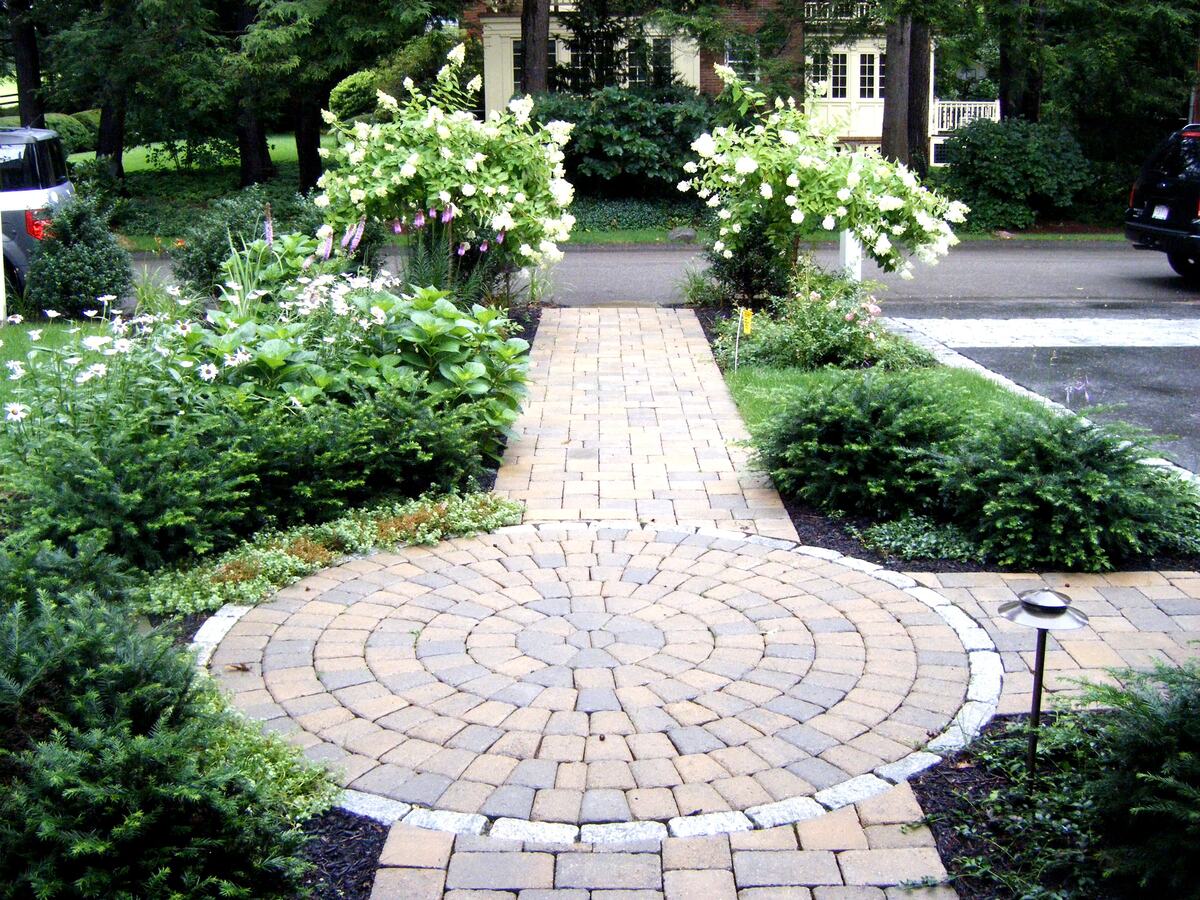





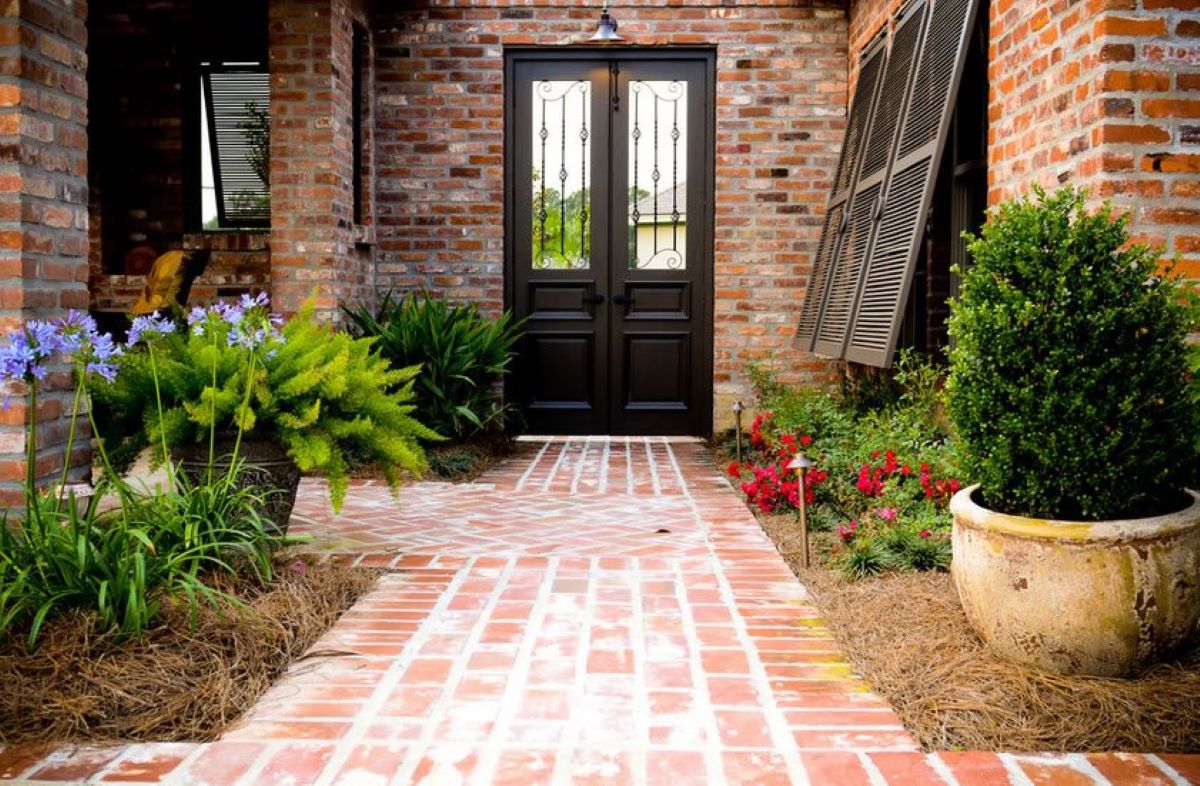
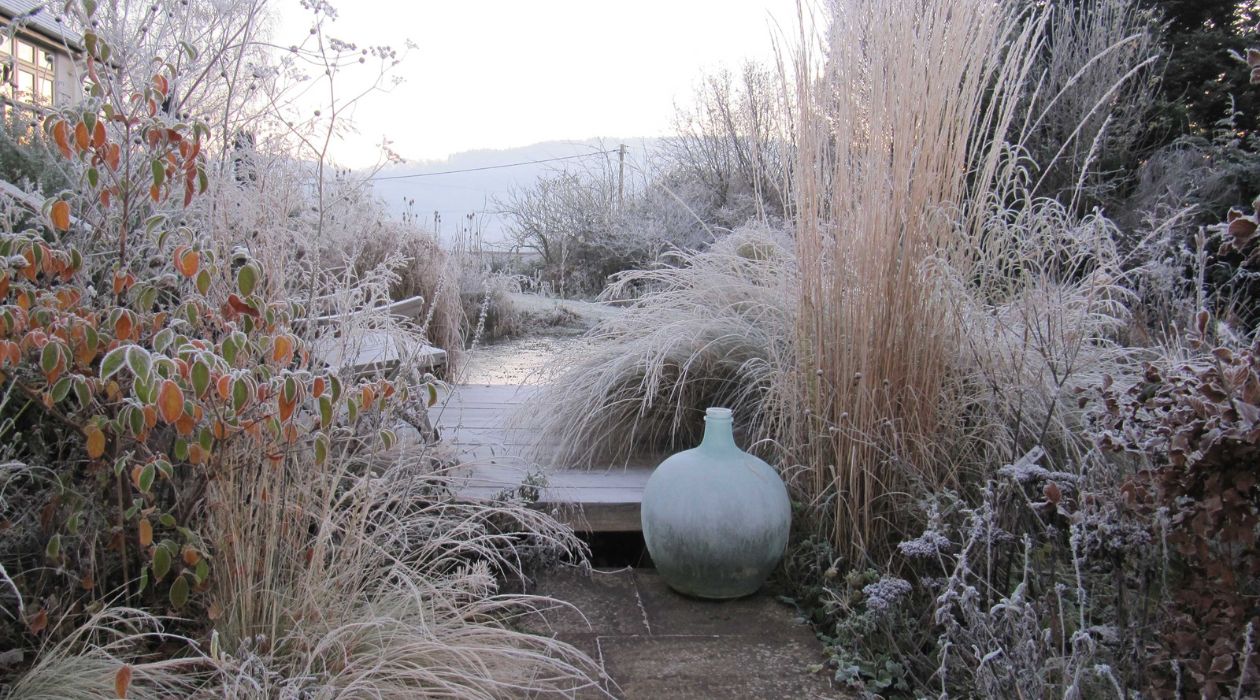

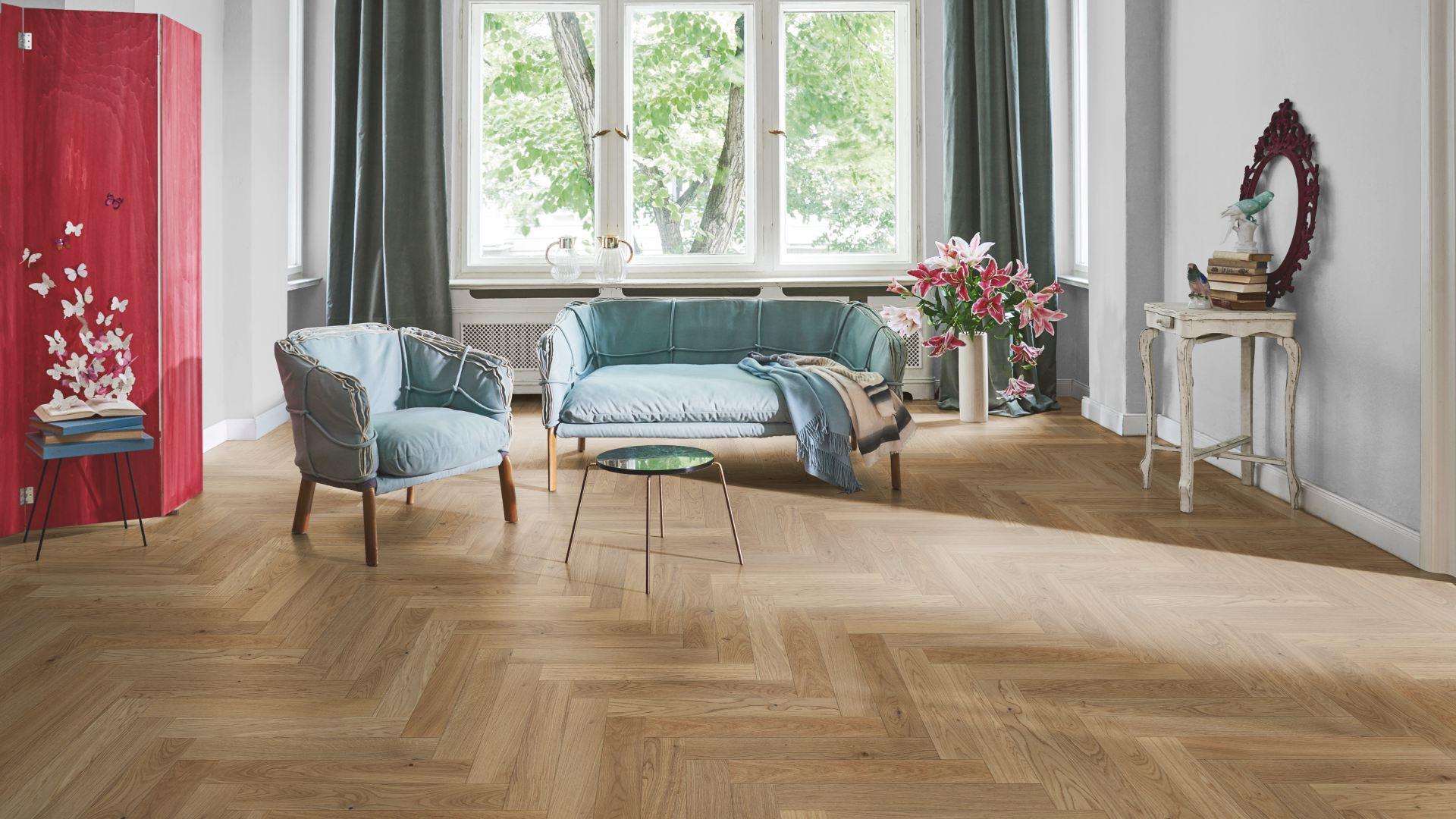


0 thoughts on “Garden Path Ideas: 15 Ways To Create A Beautiful Walkway”